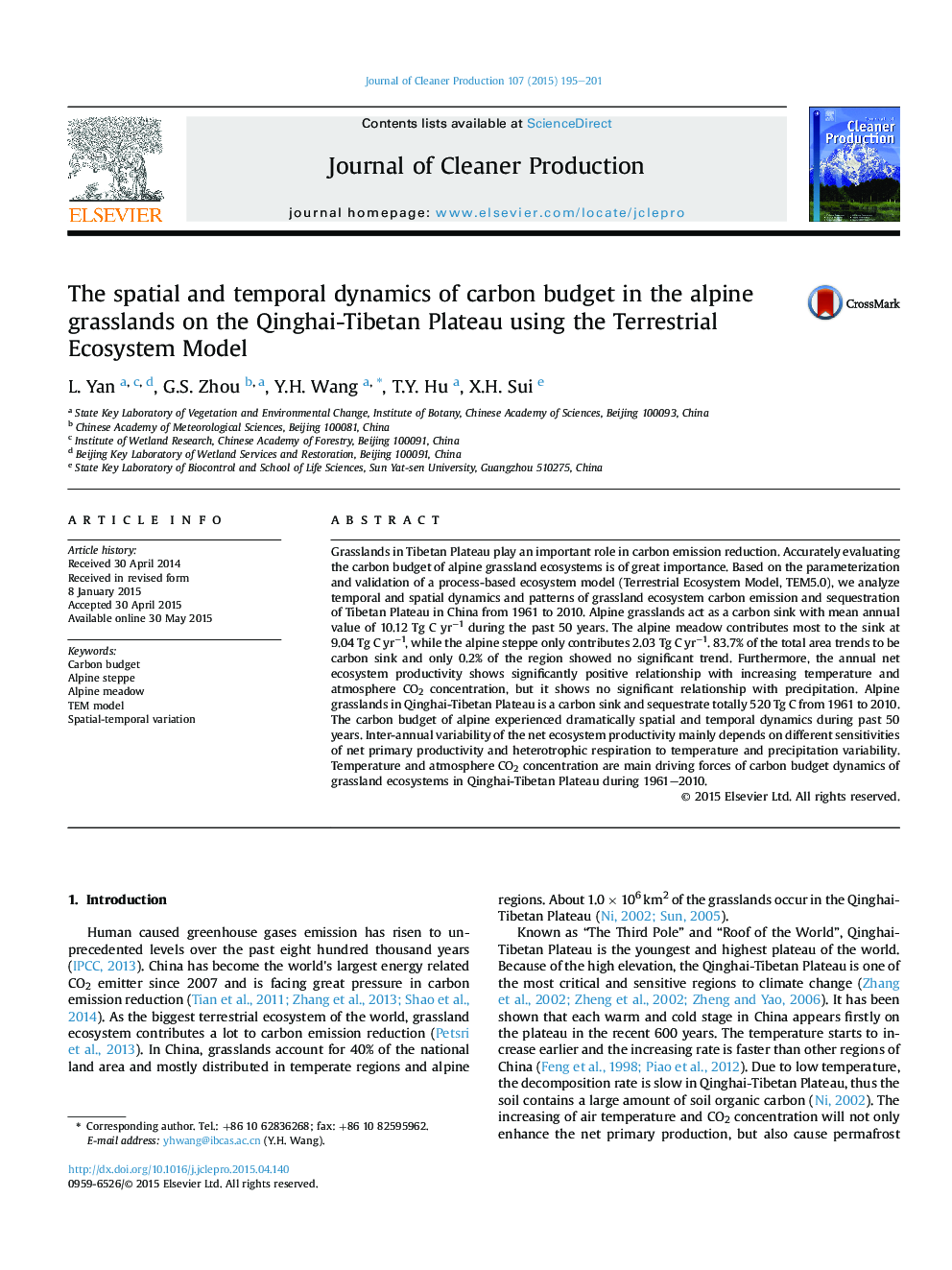| کد مقاله | کد نشریه | سال انتشار | مقاله انگلیسی | نسخه تمام متن |
|---|---|---|---|---|
| 1744412 | 1522139 | 2015 | 7 صفحه PDF | دانلود رایگان |
• Based on model simulation, this study analyzes the carbon budgets of a sensitive and fragile region.
• Temporal and spatial patterns of carbon budgets in Qinghai-Tibetan Plateau grassland ecosystems during 1961–2010 are studied.
• The contribution of two major grassland types to carbon squestration of alpine region are analyzed.
• The main meteorological driving factors of the carbon dynamics are analyzed.
Grasslands in Tibetan Plateau play an important role in carbon emission reduction. Accurately evaluating the carbon budget of alpine grassland ecosystems is of great importance. Based on the parameterization and validation of a process-based ecosystem model (Terrestrial Ecosystem Model, TEM5.0), we analyze temporal and spatial dynamics and patterns of grassland ecosystem carbon emission and sequestration of Tibetan Plateau in China from 1961 to 2010. Alpine grasslands act as a carbon sink with mean annual value of 10.12 Tg C yr−1 during the past 50 years. The alpine meadow contributes most to the sink at 9.04 Tg C yr−1, while the alpine steppe only contributes 2.03 Tg C yr−1. 83.7% of the total area trends to be carbon sink and only 0.2% of the region showed no significant trend. Furthermore, the annual net ecosystem productivity shows significantly positive relationship with increasing temperature and atmosphere CO2 concentration, but it shows no significant relationship with precipitation. Alpine grasslands in Qinghai-Tibetan Plateau is a carbon sink and sequestrate totally 520 Tg C from 1961 to 2010. The carbon budget of alpine experienced dramatically spatial and temporal dynamics during past 50 years. Inter-annual variability of the net ecosystem productivity mainly depends on different sensitivities of net primary productivity and heterotrophic respiration to temperature and precipitation variability. Temperature and atmosphere CO2 concentration are main driving forces of carbon budget dynamics of grassland ecosystems in Qinghai-Tibetan Plateau during 1961–2010.
Journal: Journal of Cleaner Production - Volume 107, 16 November 2015, Pages 195–201
